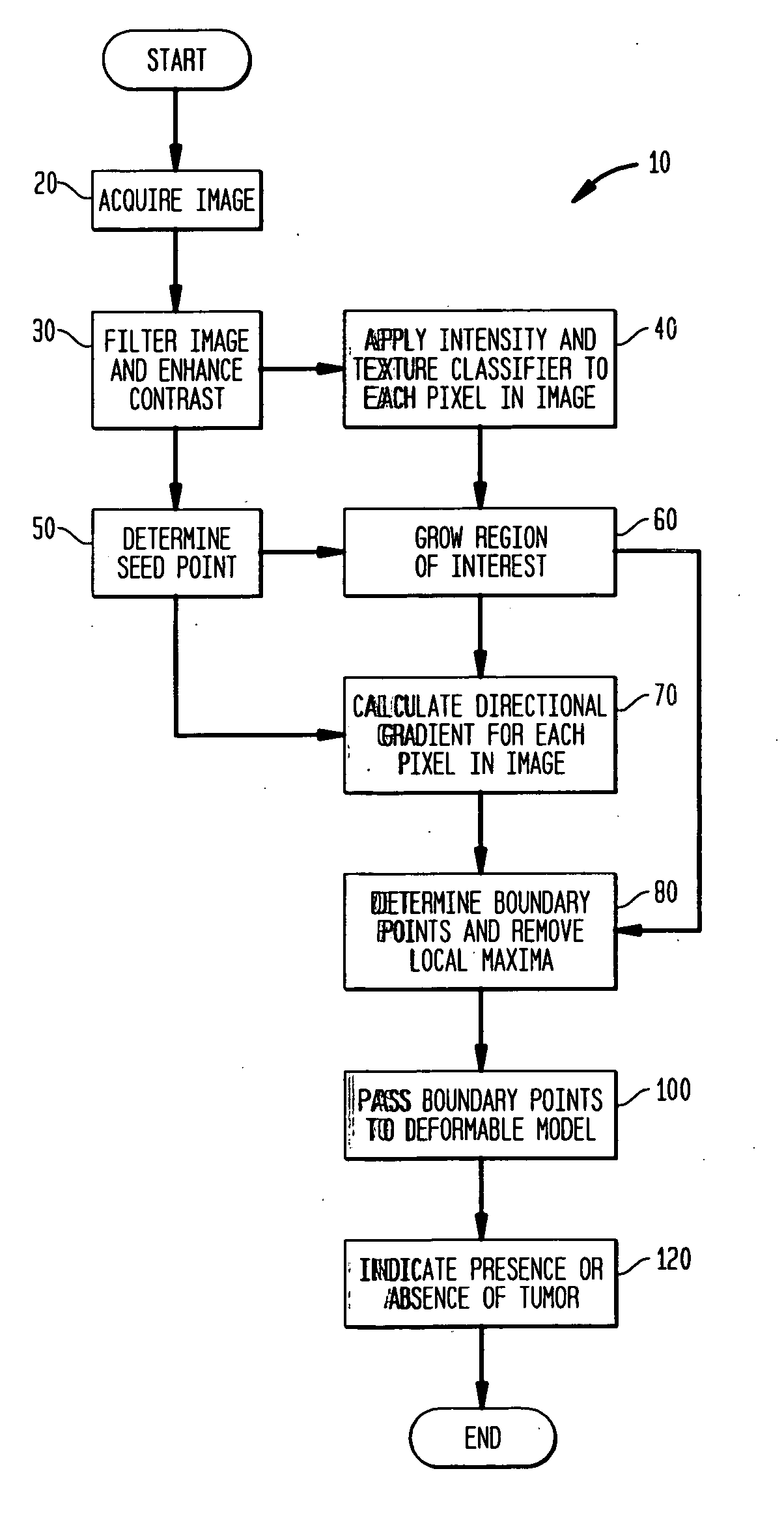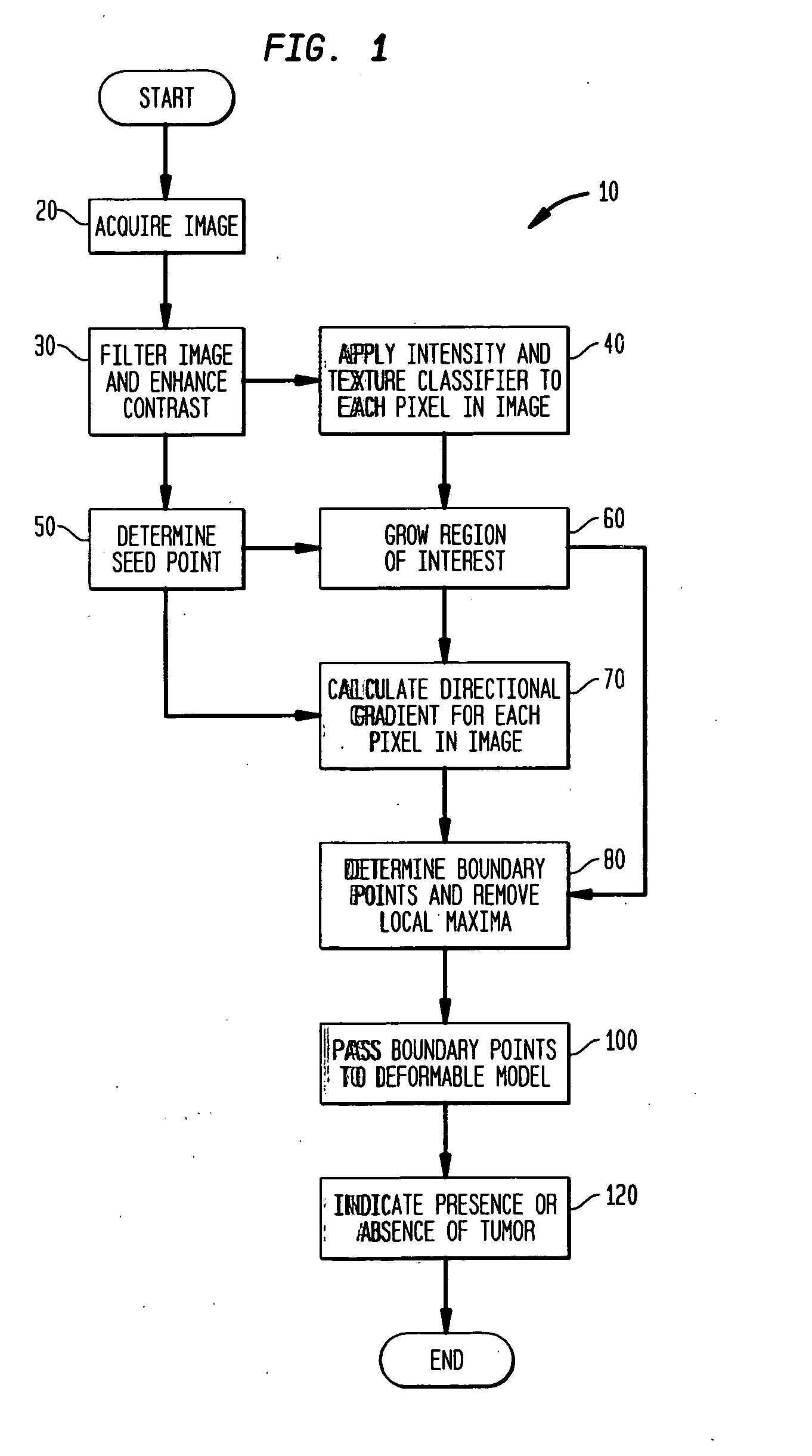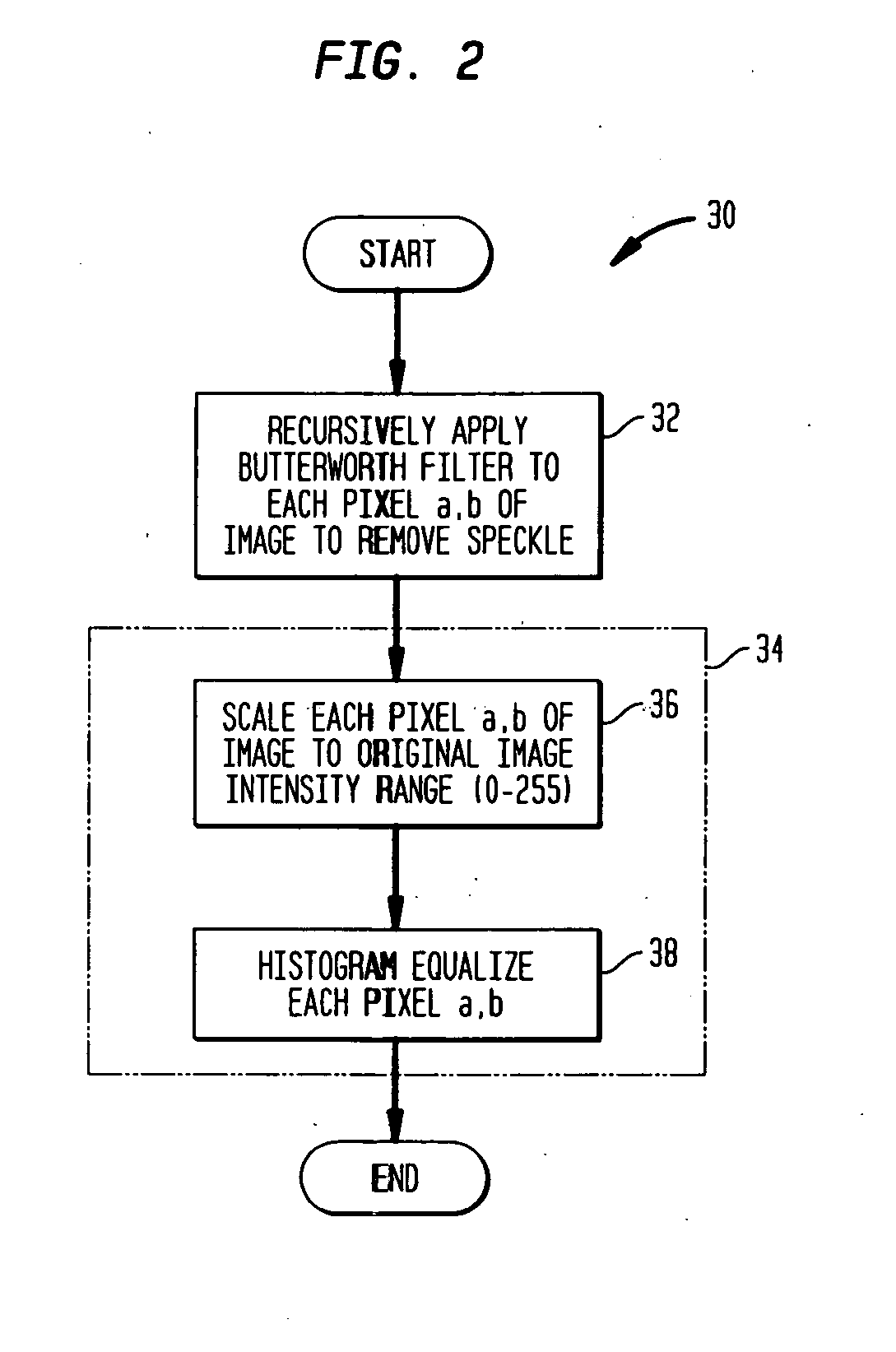Method and apparatus for automatically detecting breast lesions and tumors in images
an automatic detection and breast technology, applied in the field of automatic detection of breast tumors and lesions in images, can solve the problems of fatigue and/or oversight of radiologist, inability to detect the presence of breast tumors and lesions, inaccurate manual interpretation, etc., to remove speckles, enhance contrast, and remove speckles.
- Summary
- Abstract
- Description
- Claims
- Application Information
AI Technical Summary
Benefits of technology
Problems solved by technology
Method used
Image
Examples
Embodiment Construction
The present invention relates to a method and apparatus for automatically detecting breast tumors and lesions in images, including ultrasound, digital and analog mammograms, and MRI images. An image of a breast is acquired. The image is filtered and contrast of the image is enhanced. Intensity and texture classifiers are applied to each pixel in the image, the classifiers indicative of the probability of the pixel corresponding to a tumor. A seed point is identified within the image, and region of interest is grown around the seed point. Boundary points of the region of interest are identified. The boundary points are passed as inputs to a deformable model. The deformable model processes the boundary points to indicate the presence or absence of a tumor.
The present invention analyzes spatial distributions of various anatomic structures within a breast image, in addition to echogenicity of a lesion and its internal echo pattern, as three discriminating features for segmenting brea...
PUM
 Login to View More
Login to View More Abstract
Description
Claims
Application Information
 Login to View More
Login to View More - R&D
- Intellectual Property
- Life Sciences
- Materials
- Tech Scout
- Unparalleled Data Quality
- Higher Quality Content
- 60% Fewer Hallucinations
Browse by: Latest US Patents, China's latest patents, Technical Efficacy Thesaurus, Application Domain, Technology Topic, Popular Technical Reports.
© 2025 PatSnap. All rights reserved.Legal|Privacy policy|Modern Slavery Act Transparency Statement|Sitemap|About US| Contact US: help@patsnap.com



